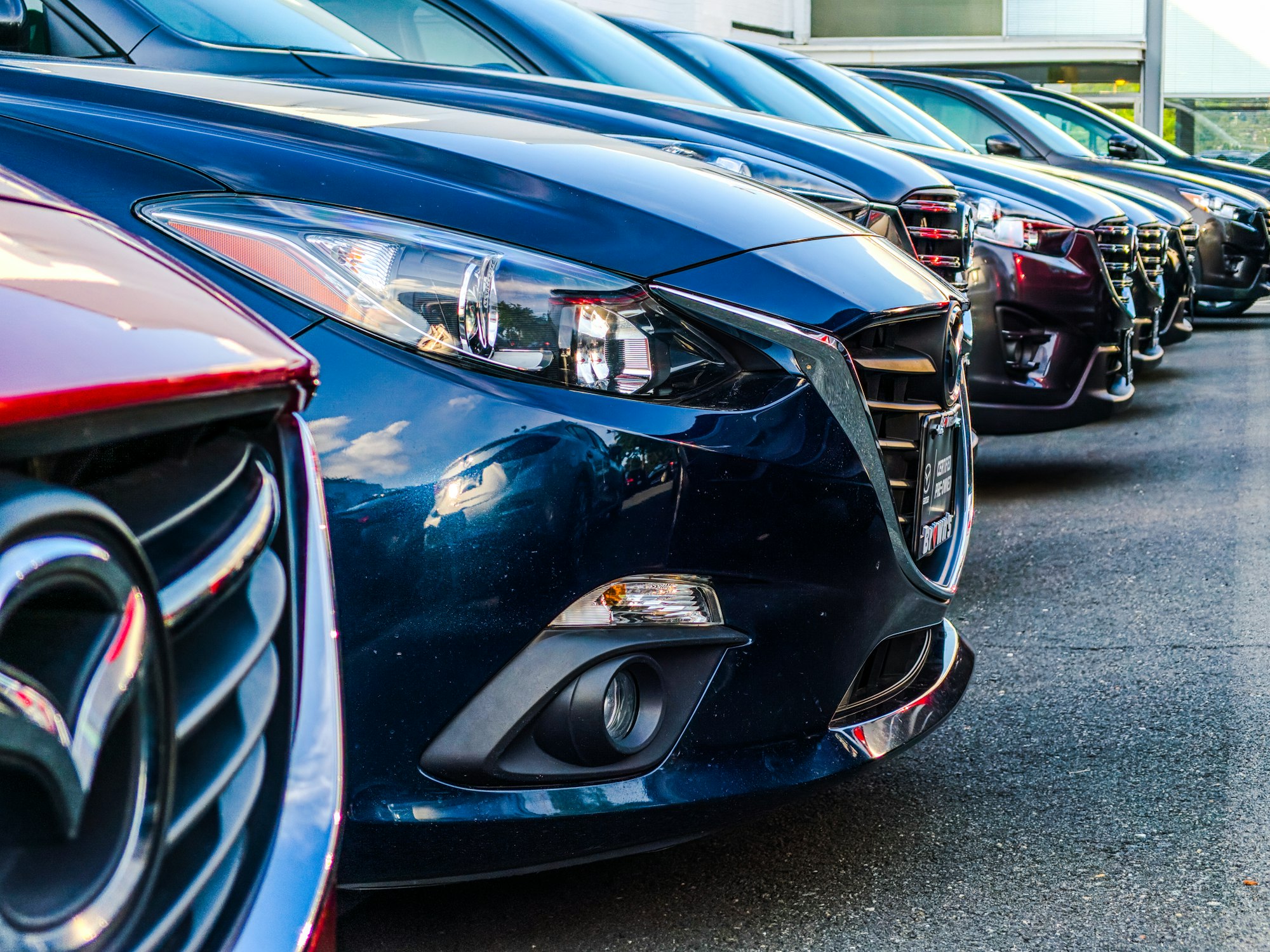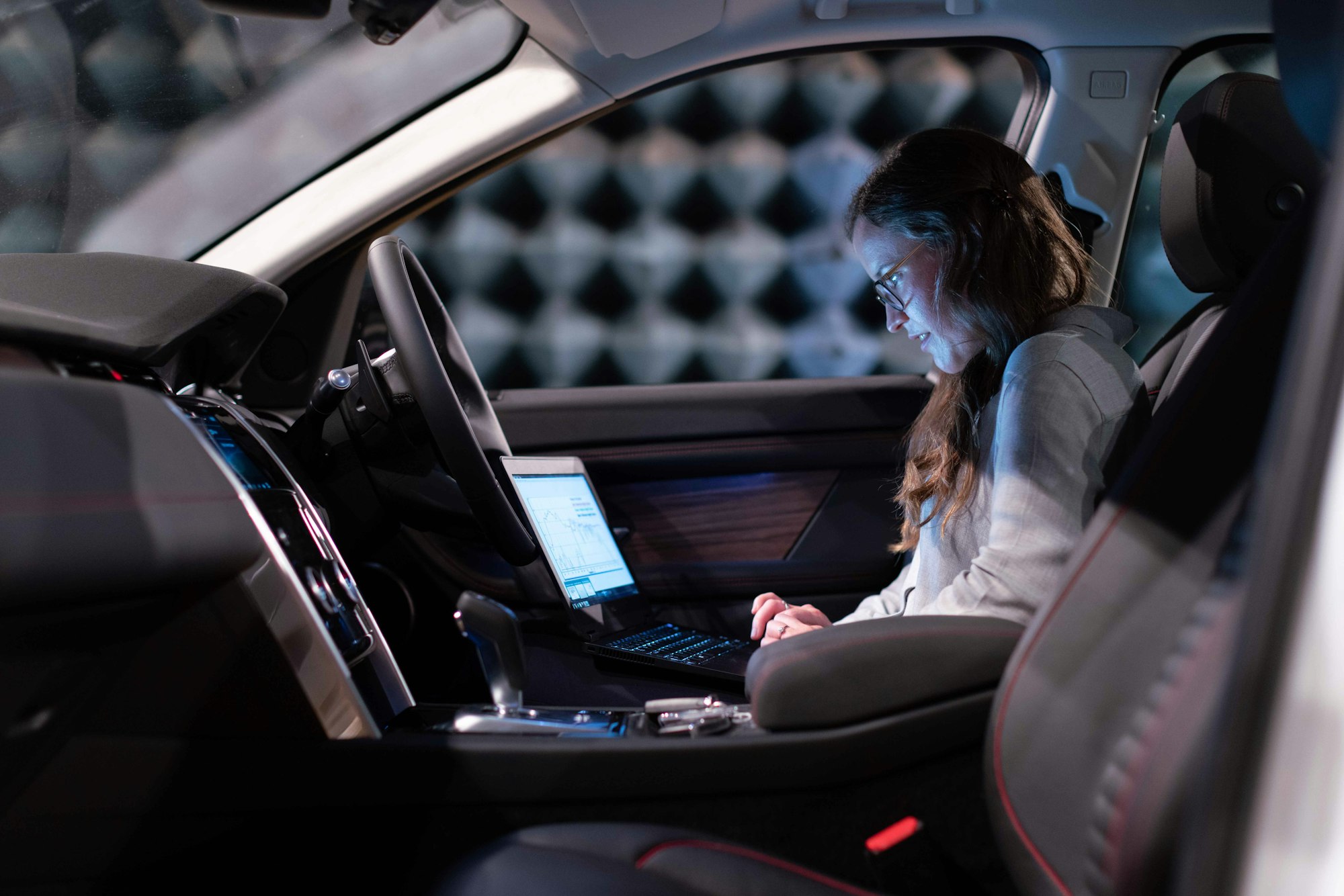Ever had one of those days where you wish you could just kick back, sip on your coffee, and read the morning news, while your car whisks you off to work, all on its own?
Well, folks, you might want to sit down for this one. Because guess what? That's not science fiction anymore. Welcome to the dawn of autonomous driving, an era where the romance of driving meets the futuristic allure of technology, where you are no longer a driver, but a passenger in your own car.
Autonomous driving, or as you may commonly know it, self-driving cars, is not just a cool feature anymore. It's a rapidly evolving technology that is shaping up to become the cornerstone of future road transportation. It's the kind of thing that makes you say,
"Hey, this feels like something straight out of a Back to the Future movie"
But no, my dear reader, it's no longer just movie magic. It's real, and it's happening right now.
Buckle up and take a journey through this exciting world of futuristic tech, delve into its benefits, taking pit stops at the challenges that lie on the road ahead. But before we put the pedal to the metal, let's get something straight: This isn't about the destination. It's about the journey. And trust me when I tell you, it's going to be one heck of a ride.

The Technology behind Autonomous Cars
Welcome to the engine room, the nerve center of the autonomous vehicle, or from now on I will abbreviate with AV, where all the magic happens. And by magic, I mean some pretty advanced tech. Seriously, if cars had brains, this would be it.
When we say autonomous driving, we're really talking about a complex ballet of several cutting-edge technologies, all working in harmony to create the symphony of self-driving. This is the kind of stuff that makes tech geeks giddy.
Let's break it down, shall we?
First up, we have Machine Learning and Artificial Intelligence.
These are the brains of the operation. You see, an AV has to be able to recognize objects, make decisions, and learn from past experiences.
Machine learning algorithms allow the vehicle to learn from data and improve its driving over time. It's like having a perpetually learning student driver, minus the teenage angst.
Remember when in Terminator 2, Arnold Schwarzenegger's character says,
"I'm a cybernetic organism. Living tissue over a metal endoskeleton"?
Well, our self-driving car isn't quite a Terminator, but it does learn and improve just like one.
Next, we have Lidar and Radar, the eyes and ears of the vehicle. Lidar, which stands for Light Detection and Ranging, uses light pulses to create a detailed 3D map of the surroundings. It's like echolocation but with light.
Combine that with Radar, which uses radio waves to detect objects and their speed, and you've got a car that can see better than a hawk on a sunny day.
Then we have GPS and other sensors that help the vehicle know exactly where it is and what's around it. These sensors can detect everything from other vehicles and pedestrians to road signs and lane markings. It's like having a sixth sense, only for cars.
And finally, we have the vehicle control systems that take all this data and actually control the vehicle. This includes everything from steering and acceleration to braking and signaling. It's like the car's musculoskeletal system, doing the physical work based on the brain's commands.
The sum of these parts is a vehicle that can drive itself, learn from its environment, and make split-second decisions without human intervention. It's a technological marvel that is equal parts thrilling and terrifying, just like that time when Dr. Ian Malcolm in Jurassic Park But hey, unlike Jurassic Park, at least we're not trying to bring back dinosaurs. We're just teaching cars to drive themselves.

Advantages Available
Okay, I've got to be upfront with you - I was skeptical about this whole autonomous driving thing at first. I mean, who wouldn't be? Cars driving themselves? It sounds like a recipe for disaster, right? But then I dug a little deeper, and you know what I found? The advantages are pretty darn impressive.
First and foremost, we're talking safety. AV don't get distracted. They don't text while driving. They don't get sleepy or drunk. They have one job, and that's to get you safely from point A to point B.
Remember when we talked about Lidar and Radar? These are the systems that allow the vehicle to have a 360-degree perception of its surroundings at all times.
It's like having eyes in the back of your head, and on the sides, and everywhere else. The result? A dramatic decrease in accidents. You know what they say in RoboCop
Q "Your move, creep."
Well, autonomous cars always know your move, and everyone else's too.
Then, there's the efficiency. AV can maintain a steady speed, optimize route selection, and even communicate with each other to avoid traffic jams. This not only saves you time but also improves fuel efficiency.
Imagine a world with no more traffic jams, and every car moving in perfect harmony. Sounds pretty nice, right?
And let's not forget about comfort and convenience. Want to catch up on the latest episode of your favorite podcast during your commute? No problem. Need to prep for that big presentation while you're stuck in traffic?
You can do that. With AV your commute time becomes your time. It's like having a chauffeur, minus the awkward small talk.So yeah, the benefits of autonomous driving are numerous and, quite frankly, hard to ignore.
It's not just about the cool factor (although, let's be honest, it is pretty cool). It's about safer roads, more efficient travel, and a little extra time to enjoy your morning coffee. And who knows, maybe someday we'll all look back and wonder how we ever got by without it.

The Impact on Society
Let's get one thing straight - autonomous driving isn't just going to change the way we drive. It's going to change the way we live. The impact of this technology on our society is going to be, and I don't use this term lightly, revolutionary.
Like Neo in The Matrix, we're being offered a red pill, a chance to see a different world. So, what does this world look like?
For starters, think about all the time we spend driving. Commutes, road trips, errands, school runs - it all adds up.
Now, imagine if all that time could be spent doing something else. Reading, working, spending time with family, sleeping - the possibilities are endless. Autonomous driving could give us that gift of time, a resource that's always in short supply.
Then there's the potential for reducing traffic congestion. With autonomous vehicles communicating with each other and managing traffic more efficiently, we could see smoother, less congested roads. That means less time stuck in traffic and more time for, well, everything else. It's like getting a VIP pass to every road, every time.
But it's not just about convenience. Autonomous driving could also lead to a significant reduction in car accidents, most of which are caused by human error. Less accidents mean safer roads and fewer lives lost. It's as though we're gaining a superpower, the power to prevent needless tragedies.
But what about the downsides? Well, like any major technological shift, there are bound to be challenges. Job displacement, particularly for those in driving-related professions, is a serious concern.
Not to mention the privacy and security issues associated with having connected, data-collecting vehicles. We're stepping into uncharted territory here, and like
Q: “We need to be careful that our ambition doesn't outpace our sense of responsibility”
Whether we like it or not, autonomous driving is coming, and it's going to reshape our society in ways we can't fully predict. But that's not necessarily a bad thing.
Change can be scary, but it can also be exciting. It can open up new possibilities and create a future we could only dream of. So, buckle up, my friends. It's going to be a wild ride.

Hands On & DIY
Okay, buckle up, because now we're getting hands-on with autonomous driving. I'm not talking about a virtual tour or a theoretical journey. I'm talking about real, hands-on experiences that you can try out today. We're diving deep into the rabbit hole, just like Alice in Wonderland
First off, let's talk about simulators. Autonomous driving simulators allow you to experience the thrill and challenges of self-driving cars from the comfort of your home.
For example, check out: Udacity's Self-Driving Car Engineer Nanodegree , where you get to write code that runs on an actual self-driving car. Talk about being in the driver's seat… right?
And if you're more of a hands-on learner, why not build your own autonomous vehicle? No, I'm not suggesting you go full Iron Man and build a futuristic car in your basement (though if you do, please invite me over).
Instead, you can start with something a little more manageable, like an autonomous toy car. Check out this DIY Robocar kit that you can assemble and program yourself.
But what if you want to take it up a notch? Well, for those of you who are looking to make a career in this field, there are numerous online courses and certifications you can pursue.
Websites like Coursera, EdX] and Udacity offer courses in machine learning, artificial intelligence, and autonomous systems that can equip you with the knowledge and skills needed to work in this exciting industry.
Of course, if you're lucky enough to live in an area where autonomous vehicles are being tested, you might even get a chance to ride in one.
Companies like Waymo are offering ride-hailing services with their autonomous vehicles in select cities. It's not quite the same as hopping in a DeLorean with Doc Brown, but it's a step towards our sci-fi future.
Hands-on experiences like these not only provide a deeper understanding of autonomous driving but also make the technology more tangible and less intimidating.
So go ahead, dip your toes in the world of autonomous driving. Who knows, you might just find yourself leading the way in this transportation revolution.

So there we have it, folks - a glimpse into the world of autonomous driving. Like stepping through the looking glass, we've ventured into a world that's both fantastical and very, very real.
We've seen how the technology works, marveling at the blend of radar, Lidar, and artificial intelligence that brings these vehicles to life. We've imagined the benefits - safer roads, smoother rides, extra free time - and it's pretty exciting, right?
But we've also talked about the societal impact, which, let's face it, can be a bit daunting. Job displacement, privacy concerns, new legal and ethical dilemmas - there are challenges ahead, no doubt. But remember, with every new technology comes disruption and change. It's a part of the process, a necessary step on the road to progress.
So what's the verdict on autonomous driving? Is it the future of transportation or a sci-fi dream that's gotten out of hand? This is an adventure, an exploration into uncharted territory. And like any good adventure, it comes with risks, rewards, and plenty of surprises along the way.
As we step into this brave new world, let's keep our minds open and our seatbelts fastened. Because one thing's for sure - autonomous driving is going to take us on a ride like no other.





